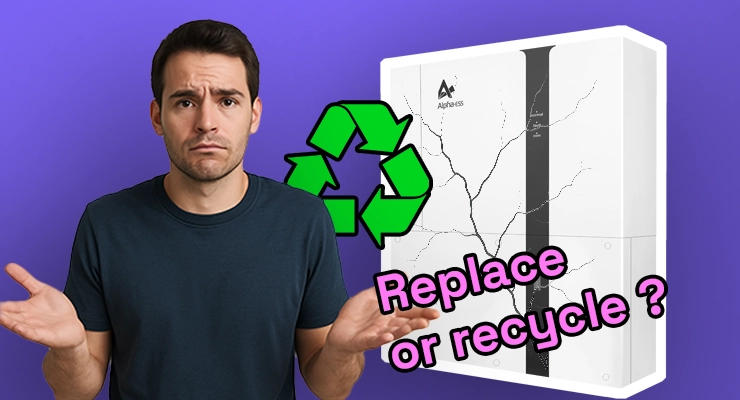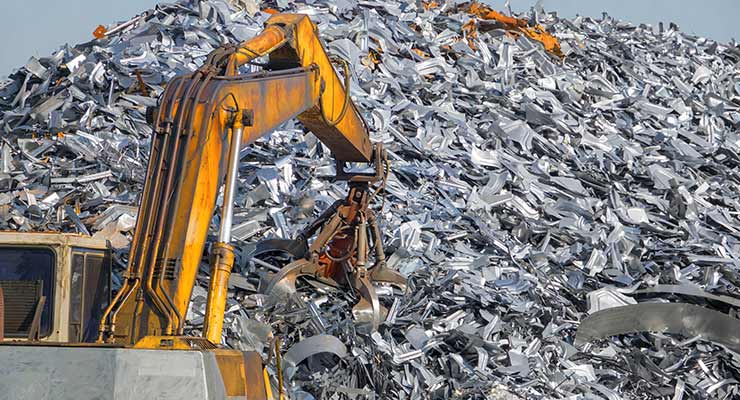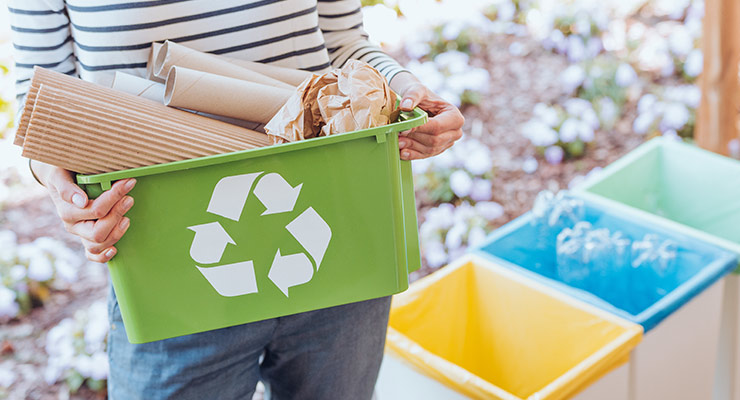When do I Recycle a Home Storage Battery?
Deciding to invest in a home battery is a significant step towards energy independence and a smaller carbon footprint. But like any hard-working appliance, it won’t last forever. Knowing when your battery is nearing the end of its life is crucial for your home’s safety, your energy savings, and the environment.
So, how do you know when it’s time to say goodbye to your current battery and have it professionally recycled?
Key signs your solar battery needs replacing
Most modern lithium-ion home batteries in Australia have a lifespan of about 10 to 15 years, which is often aligned with their warranty period. However, its actual lifespan depends on its chemistry, how it’s used, and the climate it operates in.
Rather than just watching the calendar, look for these practical signs that your battery’s performance is declining:
- It can’t hold a charge like it used to: The most obvious sign is a noticeable drop in capacity. If a fully charged battery that once easily powered your home through the night now only lasts a few hours, its ability to store energy has seriously degraded.
- It takes much longer to charge: An aging battery can develop internal resistance, making it take significantly longer to charge fully, even on a bright, sunny day.
- Your monitoring app sends warnings: Many modern batteries come with sophisticated Battery Management Systems (BMS) and monitoring apps. These systems track the battery’s “State of Health” and will often generate fault codes or alerts when performance drops below a certain threshold.
- There is visible physical damage: This is a critical safety issue. If you see any signs of bulging or swelling, cracks in the casing, or fluid leakage, you must act immediately. These are indicators of internal cell failure, which can pose a fire risk.
Why can’t you just throw a battery away?
A home storage battery is classified as hazardous waste. It contains a complex mix of materials, including lithium, cobalt, nickel, and flammable electrolytes. If sent to a landfill, these toxic substances can leach into the soil and groundwater, causing long-term environmental contamination.
Furthermore, used batteries aren’t inert. They can still hold a residual charge, and if damaged—for instance, in a garbage truck compactor—they can short-circuit and start a serious fire. For these reasons, you must never put any part of a solar battery system into your household waste or recycling bins.
The correct and safe recycling process
Recycling a home battery is not a DIY job. It involves significant electrical and chemical hazards and is governed by strict Australian standards.
Here is the process to follow:
- Contact a professional: The first step is to contact your original installer or another qualified solar and battery professional. Critically, they must be accredited by Solar Accreditation Australia (SAA). SAA was appointed by the Clean Energy Regulator as the new accreditation body from 29 May 2024, taking over the role previously held by the Clean Energy Council (CEC). This ensures the technician has the training and equipment to safely assess, de-energise, and disconnect the battery system.
- Safe decommissioning and transport: The accredited installer will safely remove the battery unit. They will ensure it is prepared for transport according to dangerous goods regulations, which often involve specific packaging and labelling to prevent short circuits.
- Arranging collection with a specialised recycler: Your installer will then coordinate with a dedicated e-waste or battery recycling company. Australia has a growing network of recyclers who can handle large-format lithium-ion batteries, such as Ecobatt, TES, and Envirostream.
Who handles the recycling in Australia?
The recycling of large home storage batteries is a specialised process and should not be confused with public battery recycling programs.
While Australia has a fantastic national battery recycling scheme called B-cycle, its public drop-off points (often found at supermarkets and retailers) are only for small household batteries like AAs, AAAs, and power tool batteries. These locations do not accept large energy storage batteries.
The recycling of your home battery is managed by your installer, who works directly with industrial-scale recyclers equipped to handle these large and hazardous units. Organisations like the Australian Battery Recycling Initiative (ABRI) help connect the industry to these specialist recyclers.
What does it cost to recycle a battery?
If your battery fails while under warranty, the manufacturer is typically responsible for the costs of replacement and disposal of the old unit.
However, if the battery is out of warranty, you will likely be responsible for the costs of decommissioning and recycling. This can include the installer’s labour for removal and transport, as well as a fee from the recycling facility. Costs can vary based on your location, the battery’s size and chemistry, and the recycler. As a guide, one Australian company estimates the average recycling cost for a 5 kWh battery is around $500 plus freight charges.
The environmental importance of a circular economy
Recycling your old battery does more than just prevent pollution. The materials inside are valuable and finite. The recycling process recovers elements like cobalt, nickel, lithium, and copper, which can then be used to manufacture new batteries and other products.
This creates a “circular economy,” reducing the need for new mining, which has its own significant environmental impacts, including high carbon emissions and water use. By recycling, you are helping to close the loop and make the entire renewable energy lifecycle more sustainable.


